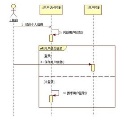Covariate-adjusted randomization (CAR) can reduce the risk of covariate imbalance and, when accounted for in analysis, increase the power of a trial. Despite CAR advances, stratified randomization remains the most common CAR method. Matched Randomization (MR) randomizes treatment assignment within optimally identified matched pairs based on covariates and a distance matrix. When participants enroll sequentially, Sequentially Matched Randomization (SMR) randomizes within matches found "on-the-fly" to meet a pre-specified matching threshold. However, pre-specifying the ideal threshold can be challenging and SMR yields less-optimal matches than MR. We extend SMR to allow multiple participants to be randomized simultaneously, to allow matches to break and rematch if a better match later enrolls (Sequential Rematched Randomization; SRR), and to use a dynamic threshold. In simplified settings and a real-world application, we assess whether these extensions improve covariate balance, estimator/study efficiency, and optimality of matches. We investigate whether adjusting for more covariates can be detrimental upon covariate balance and efficiency as is the case of traditional stratified randomization. As secondary objectives, we use the case study to assess how SMR schemes compare side-by-side with common and related CAR schemes and whether adjusting for covariates in the design can be as powerful as adjusting for covariates in a parametric model. We find each SMR extension, individually and collectively, to improve covariate balance, estimator efficiency, study power, and quality of matches. We provide a case-study where CAR schemes with randomization-based inference can be as and more powerful than Non-CAR schemes with parametric adjustment for covariates.
翻译:协变量调整随机化 (CAR) 可以降低协变量失衡的风险,并且在分析中考虑到它可以增加试验的效力。尽管 CAR 取得了进展,分层随机化仍然是最常见的 CAR 方法。匹配随机化 (MR) 根据协变量和距离矩阵,将治疗分配随机化到最佳匹配对中。当参与者依次注册时,序列匹配随机化 (SMR) 在满足预先指定的匹配阈值的情况下,在匹配中“即兴配对”。然而,预先指定理想的阈值可能很具有挑战性,SMR 产生的匹配不如 MR 优秀。我们扩展了 SMR,使多个参与者可以同时随机化,使匹配可以断开并重新匹配,如果以后更好的匹配被随机化了 (连续重配对随机化; SRR),并使用动态阈值。在简化的设置和实际应用中,我们评估这些扩展是否改善了协变量平衡、估计器/研究效率和匹配的最优性。我们将调查是否根据更多协变量的调整可能对协变量平衡和效率有害,正如传统分层随机化的情况。作为次要目标,我们使用案例研究来评估 SMR 方案与常见和相关 CAR 方案相比如何并排,以及调整设计中的协变量是否与参数调整协变量的效力相等。我们发现每个 SMR 扩展,单独和集体,均改善了协变量平衡、估计器效率、研究功率和匹配质量。我们提供了一个案例研究,在这个研究中,基于随机化推理的 CAR 方案可以与参数调整协变量的非 CAR 方案一样强大甚至更强大。


